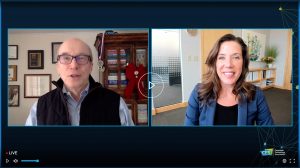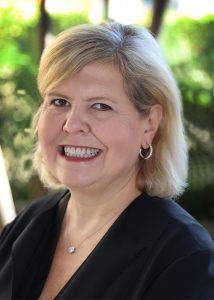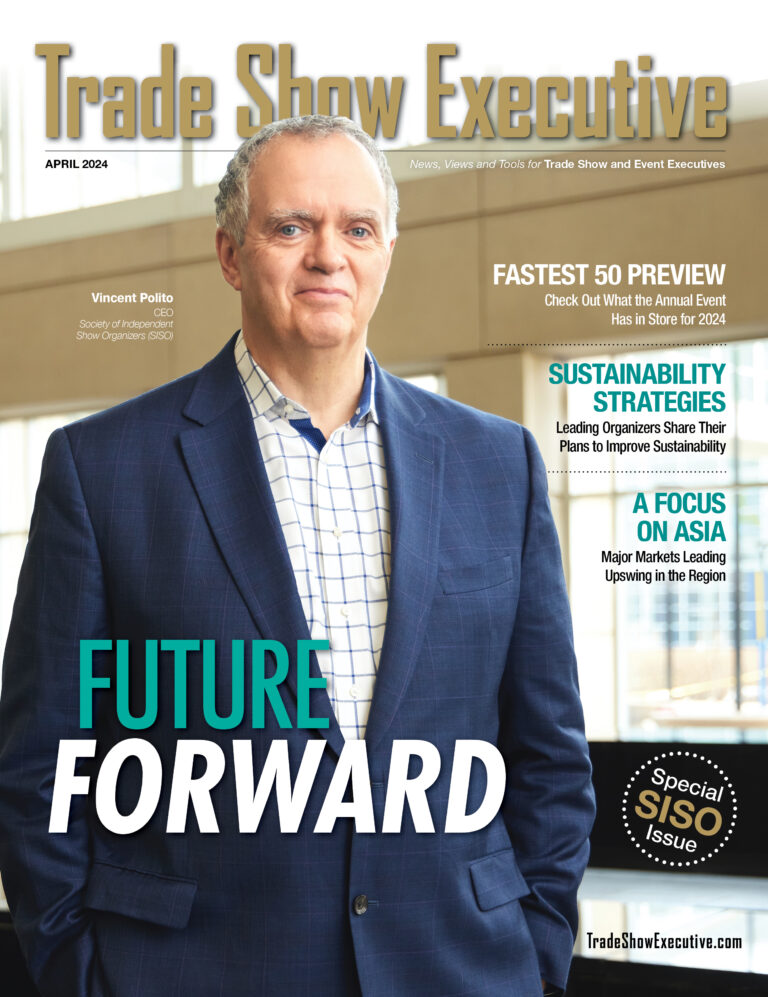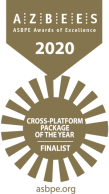
First, the good news. After having to go fully digital out of necessity in 2020, trade show organizers are anticipating a surge in pent-up demand for in-person events once the COVID-19 vaccine rollout reaches critical mass. However, there remain challenges to bringing back in-person shows, including lingering international travel restrictions, tightened budgets for both exhibitors and buyers, and a lingering hesitancy to travel unless absolutely necessary.
Most trade show organizers agree that the future likely will be hybrid, at least for a while. The question is, how do you maximize the value of both aspects of a hybrid show for attendees, exhibitors and sponsors, and the host organization?

To find out, TSE recently caught up with two trade show executives who are taking a hybrid approach. One is Karen Chupka, Executive Vice President, CES, for the Consumer Technology Association (CTA). In 2019, this top TSE Gold 100 flooded Las Vegas with about 180,000 eager attendees and exhibitors combined. It went fully digital this year and plans to launch as a hybrid in 2022. The other is Justine McVaney, Senior Vice President, Event Planning and Operations, National Association of Broadcasters (NAB) Conventions and Business Operations department. The annual NAB Show, which was originally scheduled for April 2020 and then relaunched as a fully digital event last fall, is going to be hybrid this year. This longstanding historic show was ranked No. 7 in the most recent TSE Gold 100 directory with nearly a million net square feet and more than 65,000 attendees.
- Start with the value proposition. When CTA made the decision to go virtual with its January 2021 show, Chupka said her team began its planning by going back to the basics. “What is the value of our show? Why do we come together and how do we then make that possible in a digital world?” The goal wasn’t to replicate the content, exhibitor benefits and networking —that’s core to the in-person event — but to reimagine how they could translate those values in the digital environment, she said.
-

Justine McVaney, Senior Vice President, Event Planning and Operations, National Association of Broadcasters (NAB) Conventions and Business Operations department Don’t try to replicate the in-person trade show online. “We didn’t want to make it too complex or ask companies to spend a ton of money on a digital booth,” said Chupka. “We also thought it would not be a great user experience to wander around 2,000 exhibits in a virtual world.” So CES offered several tiers of activations for exhibitors, with the top tier having the opportunity to do daily live presentations, which also were made available after the fact. A companies that wanted to keep its investment smaller could upload a brochure and video about itself and be able to chat with attendees. And it worked like a charm. “We initially were hoping to get about 1,000 exhibitors signed up — and we ended up with nearly 2,000,” Chupka said.
The digital experience gives exhibitors “an opportunity to extend their reach and increase their ROI by getting their message out to a broader audience than just those coming to the in-person event,” added McVaney. While they’re still figuring out exactly how to combine the online and in-person exhibit experience in this fall’s hybrid NAB Show exhibit booths and demo theaters, the goal is to provide qualified leads from both in-person and digital attendees, she said.
- Don’t try to replicate the in-person education online, either. CES usually offers around 300 sessions over the course of four days. “That was not feasible in a digital world, especially after six or seven months of people being on Zoom,” Chupka said. “No one was going to want to be tied to a computer screen for that long.”On the flip side, they found they could attract a more diverse set of speakers at the digital event since it wouldn’t require them to fly to Las Vegas to speak. “We will look at the possibility of only producing some sessions digitally as we go into a hybrid event,” said Chupka.McVaney said that it makes sense to edit and repackage those live sessions to serve them the way the digital customer wants to consume them. This could mean providing a recorded version of the session, supplemented with a live Q&A with speakers.
Check out the May issue of TSE for four more tips and inside info!











